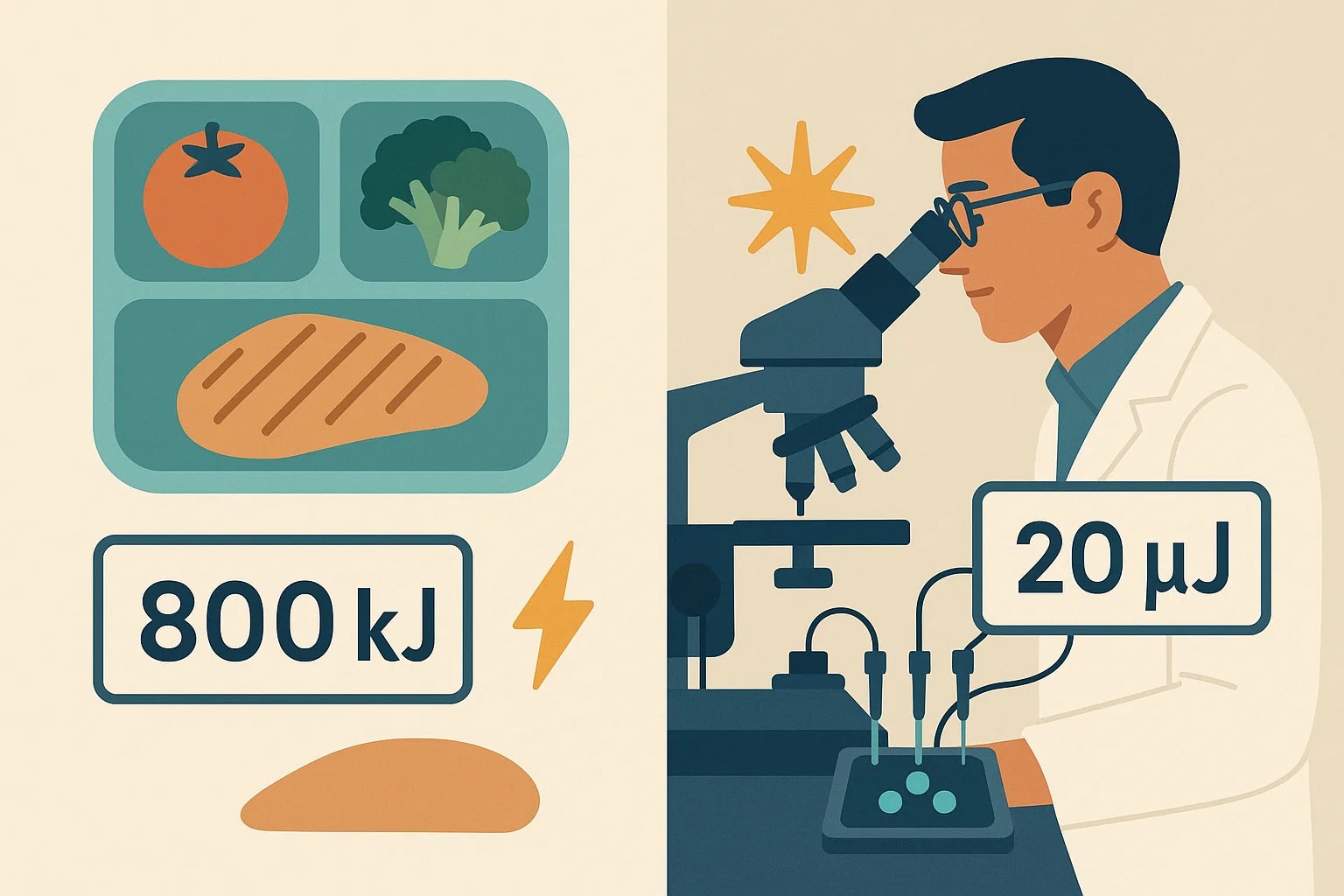Joule to Microjoule – How to convert J to μJ
When working with tiny bursts of energy — from laser pulses to sensor signals — joules can feel far too large. Microjoules make these measurements manageable, letting scientists and engineers quantify events that happen in millionths of a joule. Here’s how to switch between joules and microjoules, plus why these units matter in precision science and technology.

The joule: a universal energy reference
The joule (J) is the SI unit of energy, defined as the work done when a force of 1 N moves something 1 m. It’s also the same as 1 W·s, or 1/3 600 W·h. Joules are everywhere — describing the energy stored in batteries, measured as heat in food (kJ), or calculated in mechanical systems.
Although widely used, a single joule can represent a lot of energy in sensitive fields. For instance, a standard camera flash releases only a fraction of a joule, making smaller units like microjoules far more practical.
The microjoule: energy at the microscopic scale
A microjoule (μJ) is one-millionth of a joule:
1 μJ = 1/1 000 000 J or 1 J = 1 000 000 μJ.
This scale is common in electronics, optics, and material science. Laser research often measures pulse energies in microjoules because each pulse can be as low as 0.5 μJ. Similarly, modern sensors and circuits track microjoule-level energy transfers to optimize efficiency.
Converting joules to microjoules
The conversion is entirely decimal-based, making calculations straightforward:
1 J = 1 000 000 μJ
Energy (μJ) = Energy (J) × 1 000 000
Example:
A lab laser emits a pulse of 0.003 J. Converting to microjoules:
0.003 J × 1 000 000 = 3 000 μJ.
The pulse carries 3 000 μJ of energy.
For more unit conversions beyond energy, visit Conversion tools or use the dedicated Energy Converter for quick results.
Did you know?
-
James Prescott Joule’s 19th-century experiments not only led to the joule as a unit but also established that heat and work are interchangeable forms of energy.
-
Ultra-fast lasers used in medical eye surgery often deliver pulses of just 100 μJ or less, precise enough to cut tissue without damaging surrounding cells.
-
Microjoules are crucial in designing low-power IoT devices — some wireless sensors operate on mere 500 μJ per data transmission.
-
The human eye can detect flashes of light as low as 1 μJ, depending on conditions, making this unit key for vision and lighting research.
-
In aerospace engineering, microjoule-level energy tracking is used to monitor capacitor discharges in delicate avionics systems.
Why scales matter in energy tracking
Although joules and microjoules measure the same thing, they cater to entirely different worlds. A nutrition label might list 800 kJ for a meal — a practical way to avoid writing 800 000 J. Meanwhile, a physics lab studying quantum dots may log experiments in 20 μJ increments to understand subtle energy exchanges.
By converting joules to microjoules, scientists and engineers avoid messy decimals and make their data more intuitive. It’s not just math — it’s about keeping results easy to read and compare across experiments.

Keeping precision effortless
In fields where every fraction of energy counts, the microjoule is indispensable. Converting from joules allows researchers and designers to communicate data clearly, whether testing laser arrays, developing wearable electronics, or optimizing micro-scale energy harvesting.
For fast, reliable conversions, check out Jetcalculator’s Conversion tools or go directly to the Energy Converter.
From a single photon detector to an industrial-scale experiment, using the right unit makes energy data easier to work with and share.

